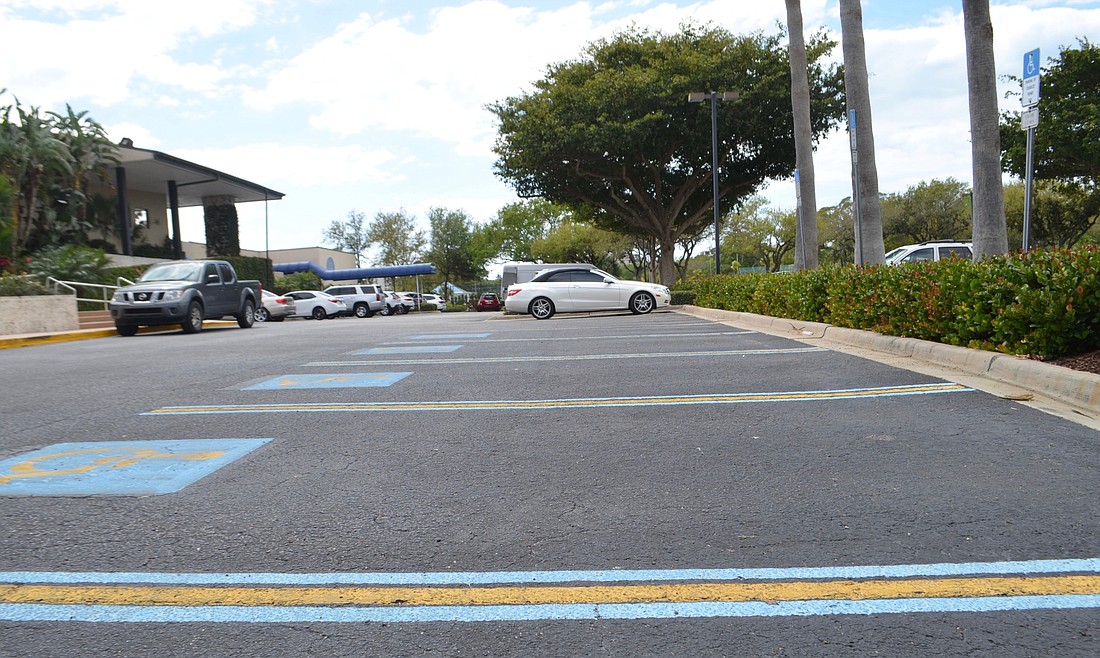- December 18, 2025
-
-
Loading

Loading

When the town set out to reconsider parking requirements for new restaurants, a few facts became apparent:
So after a series of discussions at the Planning and Zoning Board level and in front of the Town Commission, which last week gave initial approval by a 6-1 vote, new rules with a new formula could be in place following a second public hearing in April.
“The proposed language is based on a square-footage approach, which would require parking for all areas of the restaurant rather than the number of seats,” senior planner Maika Arnold said. “It’s straightforward and easy to interpret and enforce. It’s intended not to be overly burdensome on small-scale restaurants, and it does address concerns that restaurant parking is being provided for all areas of the restaurant instead of just the seats.”
The town requires one parking space for every four patron seats at a restaurant, based on maximum capacity. Allen Parsons, the town’s director of Planning, Zoning and Building, said Mar Vista Dockside’s parking lot is based on Commercial Revitalization provisions of the town’s zoning code, which allow one space for every 100 square feet of patron-used areas. That provision, by the way, no longer exists.
Town commissioners voted to move ahead with rules requiring a space for every 150 square feet of floor area in the entire business, setting up a second hearing and vote as early as April 6. As proposed, the rules would account for not only seated patrons but also staff and customers who might be waiting for a table.
The town has tried previously to seek concessions from some restaurants that don’t accept reservations as a means of cutting down on waiting patrons, to no avail.
“We are not writing anything into the code requiring restaurants to take reservations,” Arnold said. “I think that’s a private business matter, and I haven’t seen any codes that speak to pre-requirements about reservations. I know we’ve spoken to some of the restaurants and asked them nicely if they would be willing to consider it, and it’s not part of their business plan.”
That frequently shows up in street parking, which residents of Longbeach Village have complained about for years.
BJ Bishop, the Planning and Zoning Board chair and a commissioner-elect, blames that on the now-defunct allowances designed to help businesses recover from downturns.
“The fact that that was never taken off the books after the recession ended and things improved is the reason you have the nightmare in the village,” she said.
The town’s planning staff last year recommended a formula that required one parking space for every 75 square feet open to patrons, plus every 300 square feet for the remainder of the building, but the board rejected it out of concern for businesses’ ability to meet that standard. In the case of the Shore, such a requirement would have jumped its parking requirements from 47 under current rules to a hypothetical 105 under the planning staff’s proposal.
“When you look up and down the island from Euphemia Haye to Harry’s to the Chart House, you have vastly different situations,” Bishop said. “Chart House has more land and parking than they probably need on a daily basis and would meet the new requirement easily. We thought that this was a reasonable place to be. It didn’t become so onerously burdensome that we would lose every restaurant on the island when they got ready to redo or make modifications.”
Cities and towns around Florida are fairly evenly split in how they calculate restaurant parking. Sarasota requires one space for every 150 square feet. Venice requires a space for every three seats. Based on an example of a 10,000-square-foot restaurant with 150 seats, the town of Marco Island’s rules spell out a need for 38 parking spaces, while Sanibel Island calls for 133.
That range was one of the issues that Vice Mayor Ed Zunz questioned, wondering how the Planning and Zoning Board arrived at the number it settled on, given the wide range outside the area.
“We’ve made some bad mistakes in terms of what we’ve done in past restaurant parking,” he said. “We do need to correct it, but we need to spend a lot more time on understanding exactly what we’re doing and why we’re doing it and why it suits our situation.”